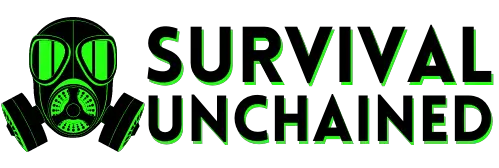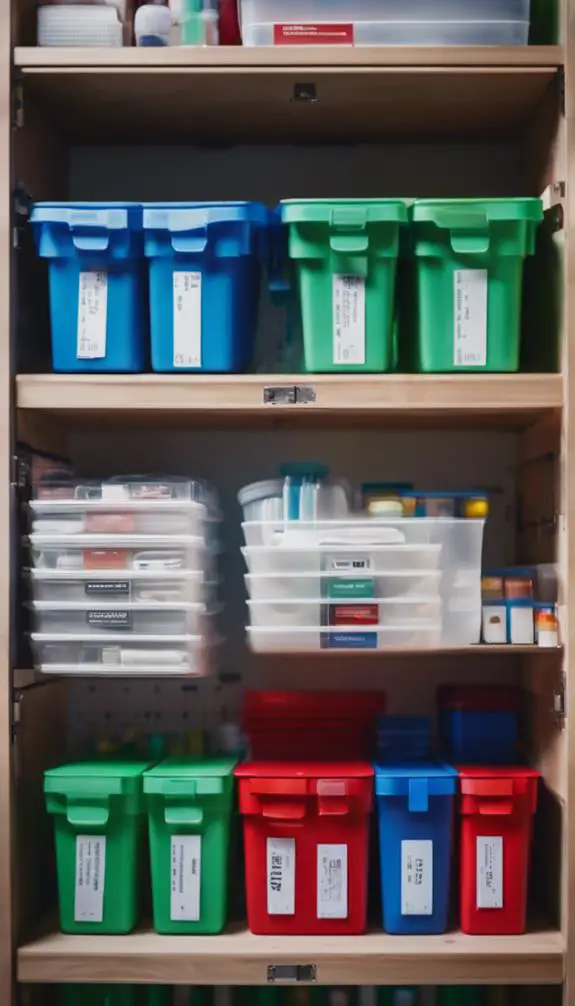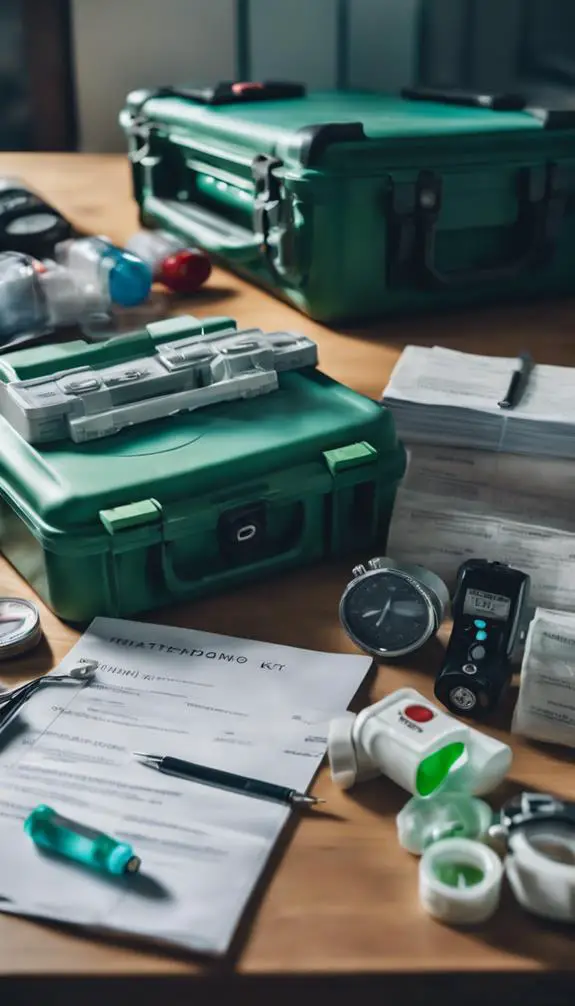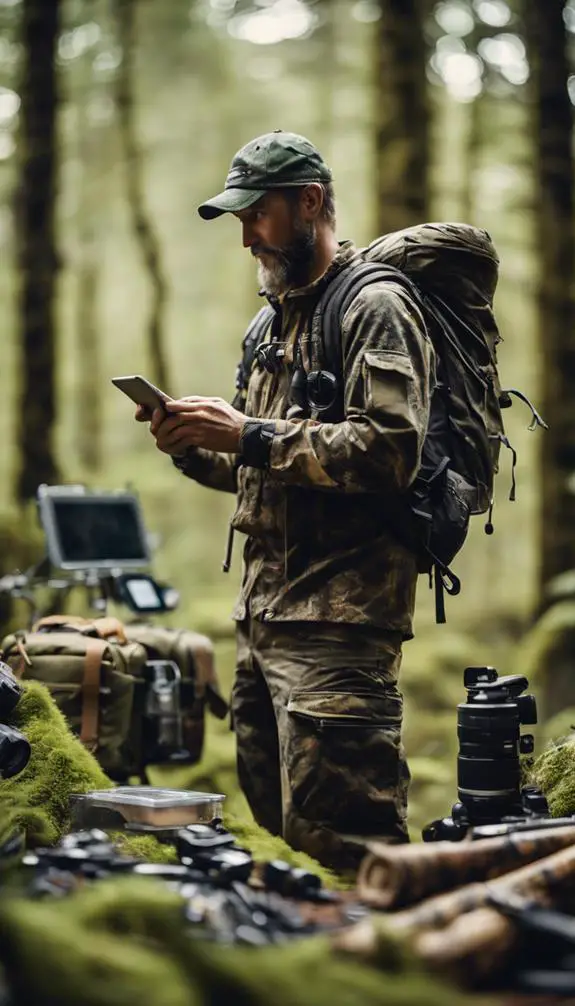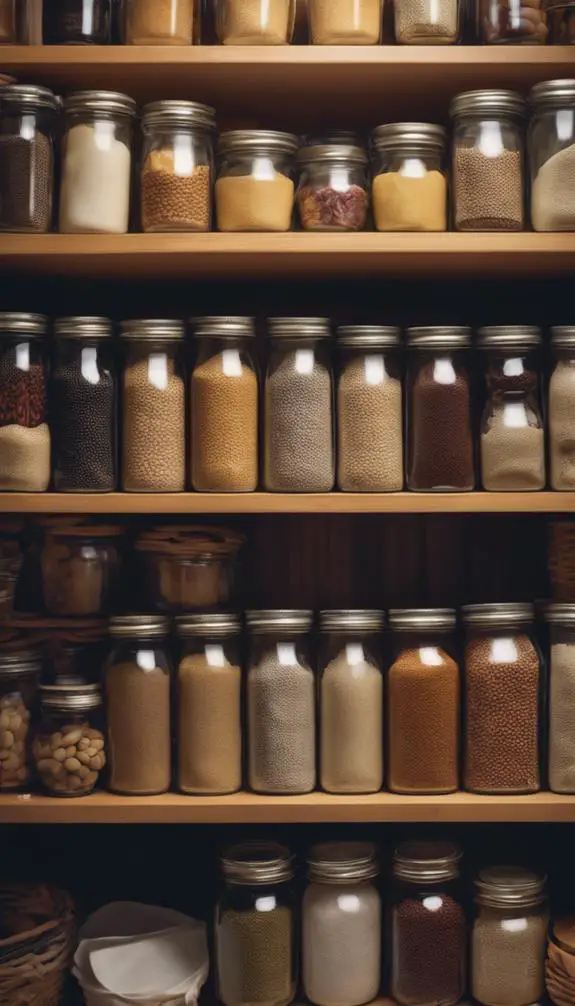As you stand amidst your stockpile of emergency supplies, you can't help but feel overwhelmed by the sheer amount of gear. It's time-consuming to find what you need, and stress levels skyrocket when every minute counts. That's where prepper color coding comes in – a simple yet powerful strategy to bring order to your preps. By assigning specific colors to categories, you can quickly identify and locate essential items, but that's just the beginning. A well-designed color code system can do so much more, and you're about to discover how to tap its full potential.
Summary
- A color code system brings order to supplies, making it easier to find what's needed in a crisis, saving valuable time and reducing stress.
- Assign a specific color to each prep category, ensuring consistency throughout the inventory, and use color-coded folders or labels to mark corresponding supplies.
- Implementing color coding in preps involves categorizing supplies into distinct groups, assigning a specific color to each, and using visual systems for quick identification.
- Establish a clear meaning for each color, and use bold fonts and bright colors to draw attention to critical information in labeling and signage.
- Combine color coding with other organizational systems, such as categorization and alphabetization, to create a hybrid approach that maximizes prep effectiveness.
Understanding Color Coding Systems
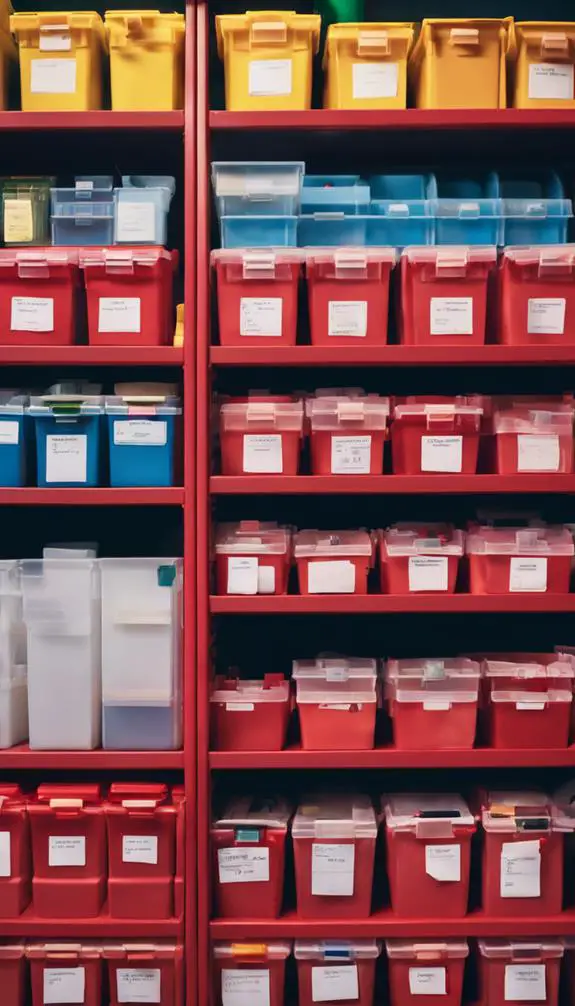
You're likely familiar with the concept of color coding, where different colors represent specific meanings or categories.
In the context of prepping, a color code system helps you quickly identify and
Benefits of Prepper Color Coding
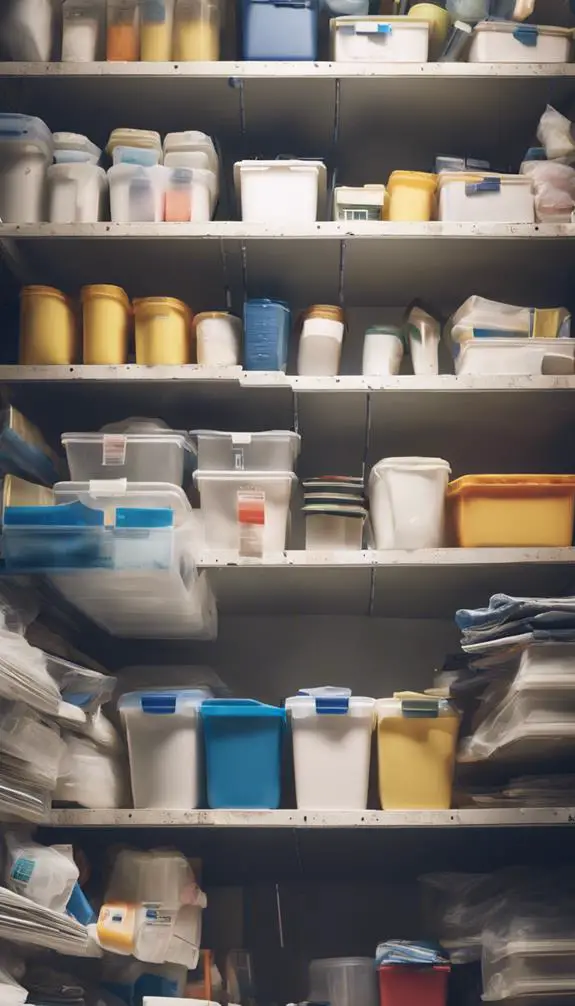
Developing a color code system for your preps can have a significant impact on your preparedness.
It's a simple yet effective way to bring order to your supplies, making it easier to find what you need in a crisis. With a color code system, you'll be able to quickly identify the items you need, saving you valuable time and reducing stress.
This coding simplicity translates to a more efficient use of your resources, allowing you to focus on other aspects of your preparedness plan.
By implementing a color code system, you'll be taking a significant step towards achieving colorful preparedness, where every item has its place and purpose.
This system will help you stay organized, calm, and in control, even in the face of uncertainty.
Choosing the Right Color Scheme

When selecting a color scheme for your prepper inventory, you'll need to decide what each color means to you, such as red for medical supplies or blue for food storage.
Consistency is key, so it's vital to establish a clear meaning for each color and stick to it throughout your inventory. By doing so, you'll guarantee that you can quickly identify the type of supplies you need in a high-stress situation.
Color Code Meaning
Selecting a color scheme for your prepping supplies and gear can be a formidable task, especially for those new to the world of preparedness.
You'll want to choose a scheme that not only looks visually appealing but also carries meaning and significance. This is where color psychology comes into play.
Different colors evoke different emotions and reactions, so it's vital to weigh how each color will impact your preparedness mindset. For instance, red can symbolize urgency and action, while blue can represent calmness and trust.
Additionally, ponder brand recognition when selecting your color scheme, as certain colors may be associated with specific brands or ideologies.
Scheme Consistency Matters
Your color scheme is only as strong as its weakest link, and inconsistency can lead to confusion and disorganization in your preps.
You must guarantee that your color scheme remains consistent throughout your preps to avoid mistakes. As your preps grow and evolve, your color scheme may need to adapt – this is what we call Color Scheme Evolution.
To maintain consistency, set Consistency Checkpoints at regular intervals to review and adjust your color scheme as needed. This will help you stay organized and guarantee that your preps remain effective.
Categorizing Your Preps by Color
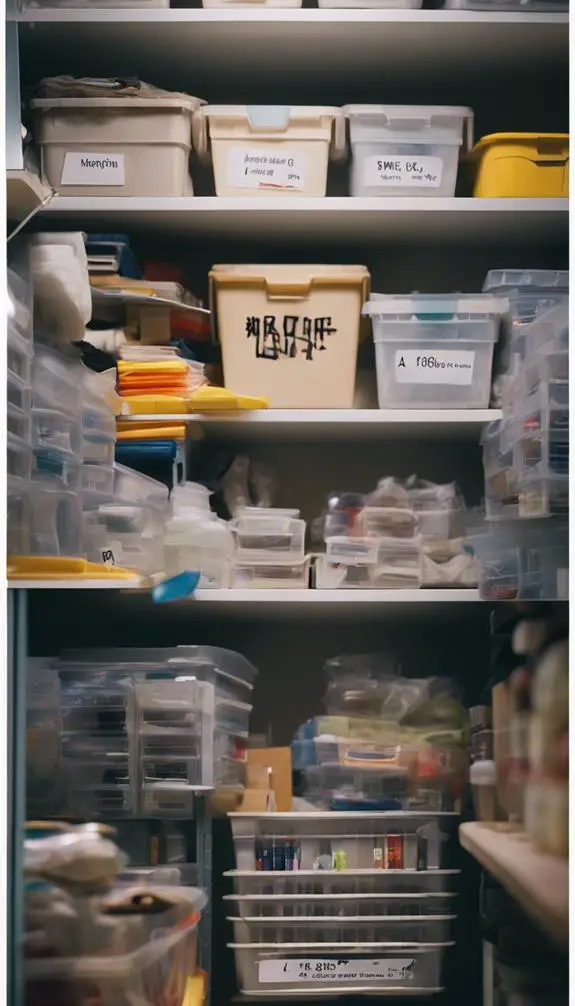
You'll need to create prep category labels that make sense for your specific needs, such as "Food", "First Aid", or "Shelter.
Once you have these labels, you can assign a corresponding color to each category, creating a color code system that's easy to understand and follow.
Prep Category Labels
Five essential prep categories make up the foundation of a well-organized prepper's stash: water, food, first aid, shelter, and personal protection.
Assigning a specific color to each category helps you quickly identify the type of prep you're looking for.
When creating your prep category labels, avoid common labeling mistakes like using vague terms or overlapping categories.
Instead, use clear and specific labels that accurately reflect the contents of each category.
For example, under the "Food" category, you might've sub-labels for "Canned Goods," "Dried Goods," and "Cooking Supplies."
Color Code System
Now that you've assigned clear and specific labels to your prep categories, it's time to take organization to the next level with a color code system.
This system allows you to visually categorize your preps by color, making it easy to identify and access what you need quickly. You can customize your color code system to fit your personal preferences and needs.
Use Color Code Personalization to assign specific colors to each category, and create Customized Labels to match. For example, you might use red for medical supplies, blue for food and water, and green for shelter and protection.
Assigning Colors to Prep Categories

Many preppers find it helpful to organize their supplies by categorizing them into distinct groups, and assigning a specific color to each group can take this organization to the next level.
You'll want to identify the categories that make the most sense for your unique situation, such as food, water, first aid, and shelter.
Assign a specific color to each category, and use color-coded folders or labels to mark the corresponding supplies.
This visual system will help you quickly identify what you need and where it's located.
Consider using different shades or hues to indicate prep priority levels, such as red for critical items and green for secondary supplies.
Creating a Color Code Key
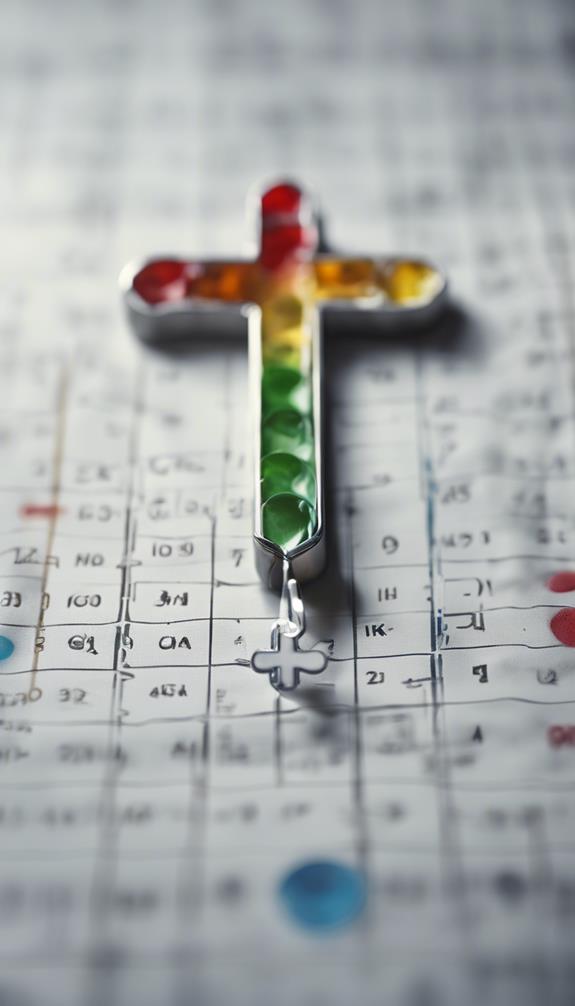
You'll need a clear and consistent color code key to guarantee you and your family can quickly identify and access your prep supplies in an emergency.
A well-organized key will help you establish a labeling system hierarchy, making it easy to categorize and prioritize your gear.
Code Consistency Matters
Consistently applying a color code system is crucial to its success.
You can't have a system that's 90% effective – it needs to be 100% consistent to avoid confusion. Code mistakes can be disastrous, especially in high-stress situations.
To avoid errors, create a color code key that outlines the meaning of each color. This key should be easily accessible and reviewed regularly to certify you're using the system correctly.
Be aware of color limitations, too. For example, if you have a red-green colorblind family member, using those colors to distinguish between categories mightn't be the best idea.
Labeling System Hierarchy
By establishing a clear labeling system hierarchy, you create a color code key that's easy to understand and follow.
This hierarchical structure confirms that your color codes are organized, logical, and scalable. As your preps grow, your label system evolves, and a well-developed hierarchy allows for seamless integration of new categories and subcategories.
To achieve this, start by identifying the main categories of your preps, such as food, water, and medical supplies. Then, break down each category into subcategories, like grains, canned goods, or first aid kits.
Visual Cue Importance
When it comes to your color code key, visual cues play a critical role in facilitating quick recognition and efficient navigation of your preps.
You want to create a system that's intuitive and easy to follow, even in high-stress situations. To achieve this, establishing a solid grasp of visual cue importance is vital.
In visual psychology, cue saturation occurs when your brain becomes overwhelmed by too many visual stimuli, leading to confusion and delay.
Labeling and Signage Best Practices
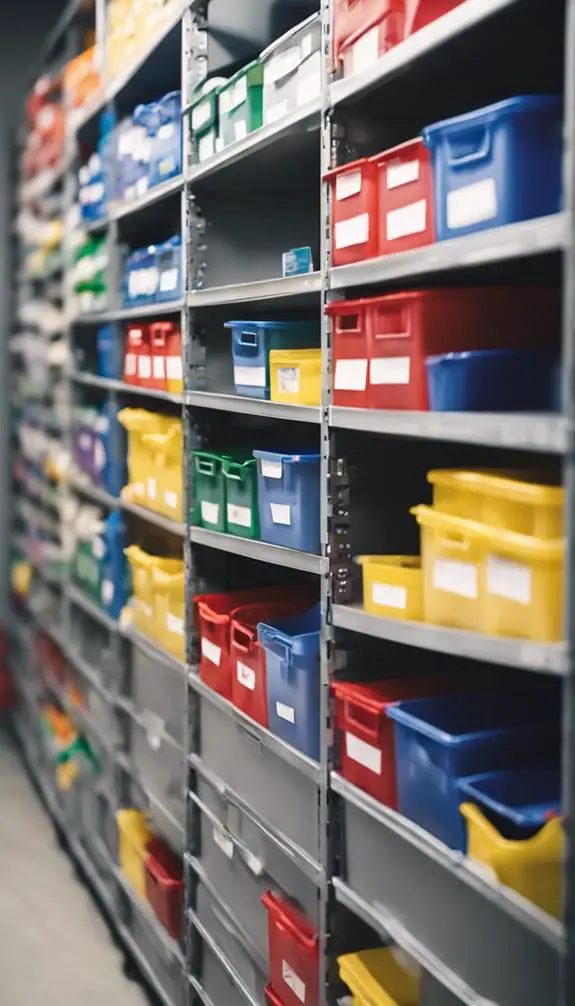
Labeling and signage are crucial components of a well-organized prepper storage system, and getting them right can make all the difference in times of crisis.
You'll want to avoid common labeling mistakes, such as using worn-out or faded labels, not labeling items clearly, and not using standardized labeling conventions.
Establish signage standards that are easy to read and understand, using clear headings and concise descriptions.
Use bold fonts and bright colors to draw attention to critical information, like expiration dates and hazardous materials.
Verify your labeling and signage are consistent throughout your storage system, making it easy for you and others to quickly identify what they need.
Organizing Your Storage by Color
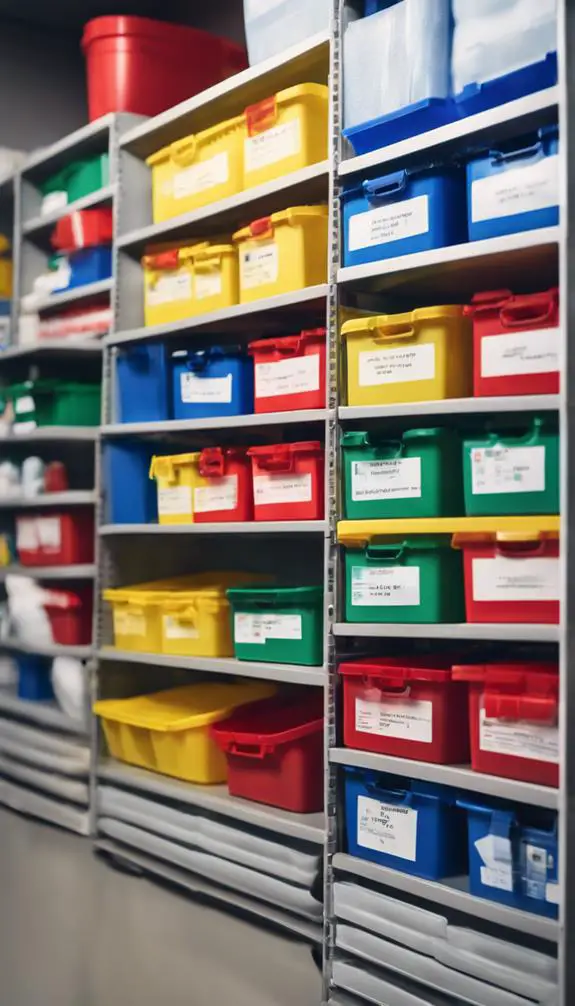
Among the rows of shelves and crates, a rainbow of colors can be your best friend in a crisis.
Organizing your storage by color is a simple yet effective way to guarantee you can find what you need quickly.
Use storage bins of different colors to categorize your preps. For example, use red bins for medical supplies, blue for food and water, and green for tools and equipment.
This color-coded system allows you to identify what you need at a glance, saving you precious time in an emergency.
Implement shelf organization by grouping similar items together and labeling each shelf with its corresponding color.
This system certifies you can access your preps efficiently, giving you peace of mind and a sense of freedom in times of uncertainty.
Implementing Color Coding in Shelters
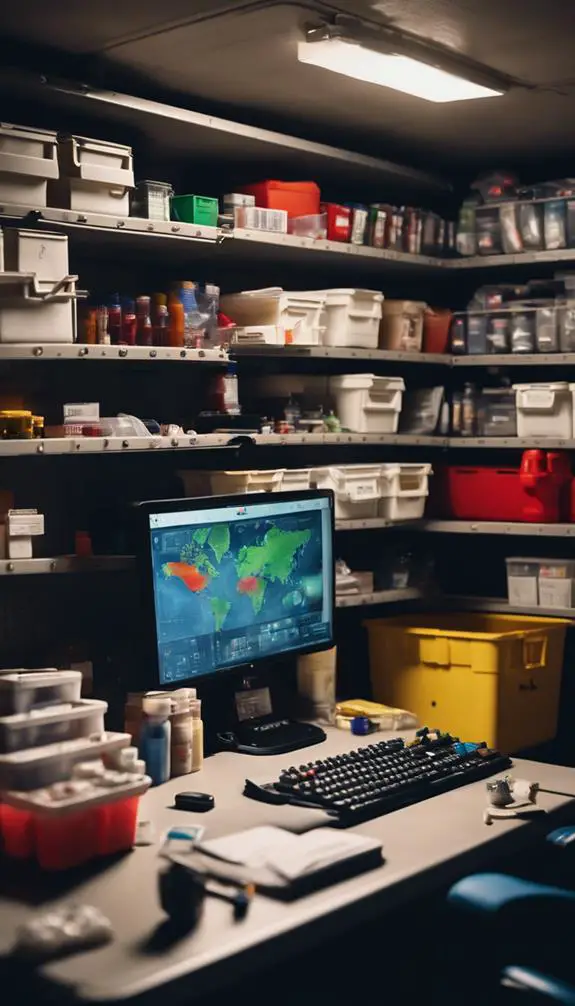
You've optimized your storage space with a color-coded system, and now it's time to take that organization to the next level by implementing it in your shelter.
When it comes to your shelter, prioritize the most critical areas, such as food, water, and first aid. Assign a specific color to each priority, guaranteeing that you can quickly identify the most essential items.
Use this color scheme to organize your shelter's layout, grouping similar items together. For example, designate a specific area for food storage, marked with the corresponding color, and store all food-related supplies there.
This color-coded system will help you navigate your shelter efficiently, even in high-stress situations, and confirm you're prepared to respond to any emergency.
Color Coding for Bug-Out Bags
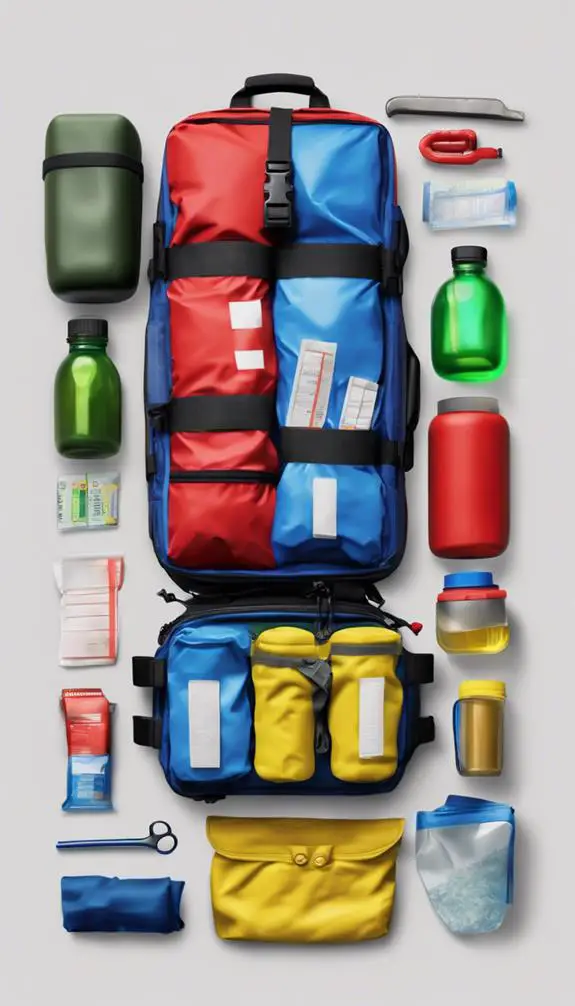
Your bug-out bag is your lifeline in a crisis, and a color-coded system can guarantee you grab the right gear in a hurry.
By categorizing your bag's contents with colored labels or tags, you'll confirm that essential items are easily accessible. Identify your Bag Priorities, such as first aid, food, and shelter, and assign a corresponding color to each category.
Implement Packing Strategies like grouping similar items together and placing them in order of importance. This visual system enables you to quickly locate critical supplies, saving precious time in emergency situations.
With a color-coded bug-out bag, you'll be better equipped to respond to crises and protect your freedom.
Using Color Coding for Inventory Management
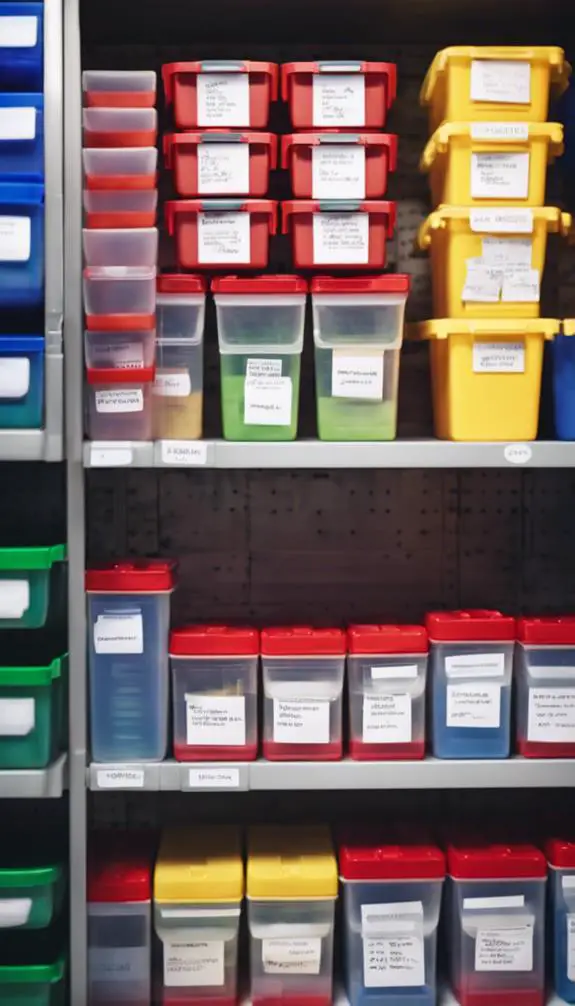
As you've organized your bug-out bag with a color-coded system, you're now ready to apply this same logic to your inventory management.
Using color coding for inventory management streamlines your supply tracking and makes inventory audits a breeze. Assign a specific color to each category of supplies, such as food, first aid, or communication.
This visual system allows you to quickly identify what you have, what you need, and what's expiring soon. You can also use color-coded labels or stickers to categorize your supplies, making it easy to locate what you need in a emergency situation.
Integrating Color Coding With Other Systems
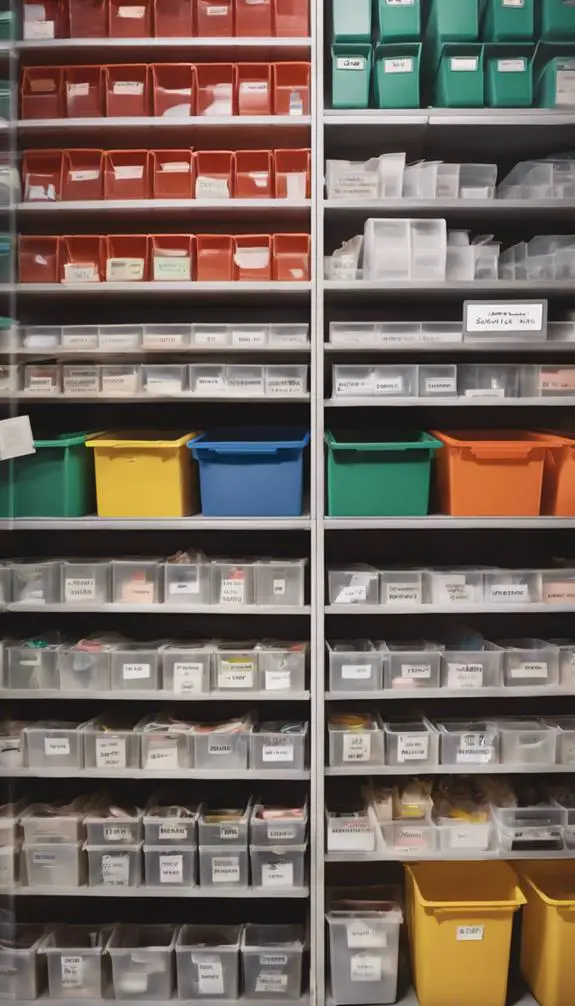
Since your color-coded system is up and running, it's time to take it to the next level by integrating it with other systems.
This hybrid approach allows you to maximize the effectiveness of your preps and streamline your emergency response.
By combining color coding with other organizational systems, such as categorization or alphabetization, you can create a robust and flexible framework for managing your supplies.
For example, you can use color coding to identify categories of items, and then use categorization to further break down those categories into sub-groups.
This system integration enables you to quickly locate specific items and respond efficiently in emergency situations.
Overcoming Common Color Coding Challenges

Across the spectrum of prepping, few systems are as elegant as color coding, yet even the most well-designed systems can encounter obstacles.
You may face color coding frustrations, such as difficulty categorizing items or inconsistent labeling. To overcome these obstacles, take a step back and reassess your system.
Identify areas where your color coding system is breaking down and make adjustments. Consider simplifying your categories or standardizing your labeling process. Don't be afraid to start over and try a new approach.
FAQs
Can I Use Color Coding for Preps Stored in Different Locations?
You can definitely use color coding for preps stored in different locations! Create a site map, assign location indicators, and use corresponding colors to identify storage areas, making it easy to find what you need, when you need it, no matter where it's stored.
How Do I Handle Preps That Fit Into Multiple Color Categories?
When preps fit into multiple color categories, you'll encounter category overlap. Prioritize labeling by identifying the most critical category and labeling it first, then add secondary labels to certify you quickly identify the prep's multiple uses.
Can I Use Symbols or Icons Instead of Colors?
You can definitely use icon systems or symbols instead of colors to categorize your preps, assigning specific symbol meanings to each category, making it a personalized and flexible system that suits your needs and preferences.
Is Color Coding Suitable for Preppers With Color Vision Deficiency?
You're right to wonder if color coding works for preppers with color vision deficiency; thankfully, you can adapt the system to prioritize Accessibility Matters by incorporating high-contrast symbols or icons, ensuring Color Blind Considerations don't hinder your prep organization.
Can I Adapt Color Coding for Preps Used by Multiple People?
You can adapt color coding for preps used by multiple people by considering family members' personal preferences and needs, creating a customized system that works for everyone, and ensuring it's easy to understand and use.
Conclusion
You've now mastered the art of prepper color coding. By categorizing your supplies into distinct color groups, you've streamlined your preparedness plan, saving time and reducing stress in emergency situations. With your customized system in place, you can confidently locate essential items, prioritize critical areas, and track inventory. Stay organized, calm, and in control – you're ready to face any crisis that comes your way.
